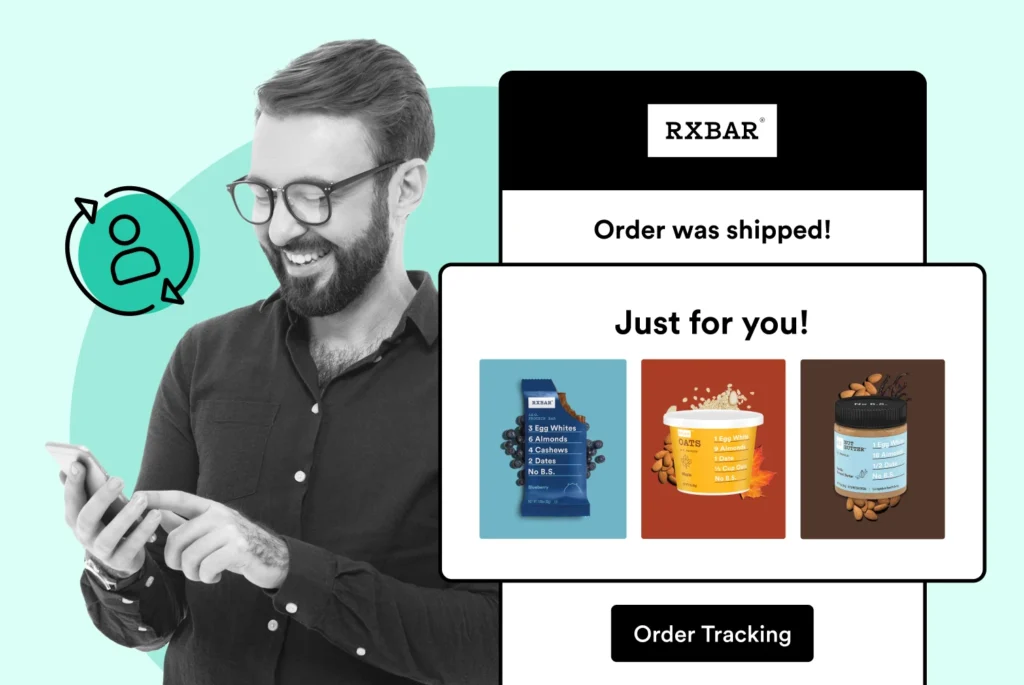
Maximizing Customer Lifetime Value: Effective Upselling Strategies
Practical upselling strategies: encourage repeat business & build stronger customer relationships, directly contributing to enhanced customer lifetime value.
Shipping, Tracking & Notifications
Boost customer experience and reduce support tickets
Realtime order and shipment tracking
Proactive order and shipping notifications
AI-Enhanced Discounted Labels
Predictive pre-purchase estimated delivery dates
Self-Serivce branded order tracking
Effortless experience delivered
Identify and Resolve Order Issues
Realtime order and shipment tracking
Make returns profitable and delight customers
Flexibility to define any return destinations & conditions
Simplify returns for your customers and team
Incentivize exchanges over returns
Returns management made easy for your team
Returns management made easy for your team
Easy claims and smart upsells
Understand why your customers are returning
In-Store & Curbside Pickup
Unify the online and the in-store experience
Hassle-free pickup experience for customers
In-Store dashboard to keep operations streamlined
In-Store and Online orders unified
Drive foot-traffic to your stores
Shipping, Tracking & Notifications
Boost customer experience and reduce support tickets
Realtime order and shipment tracking
Proactive order and shipping notifications
AI-Enhanced Discounted Labels
Predictive pre-purchase estimated delivery dates
Self-Serivce branded order tracking
Effortless experience delivered
Identify and Resolve Order Issues
Realtime order and shipment tracking
Make returns profitable and delight customers
Flexibility to define any return destinations & conditions
Simplify returns for your customers and team
Incentivize exchanges over returns
Returns management made easy for your team
Returns management made easy for your team
Understand why your customers are returning
In-Store & Curbside Pickup
Unify the online and the in-store experience
Hassle-free pickup experience for customers
In-Store Dashboard to keep operations streamlined
In-Store and Online orders unified
Drive foot-traffic to your stores
Boost customer experience and reduce support tickets
Realtime order and shipment tracking
Proactive order and shipping notifications
AI-Enhanced Discounted Labels
Predictive pre-purchase estimated delivery dates
Self-Serivce branded order tracking
Effortless experience delivered
Make returns profitable and delight customers
Flexibility to define any return destinations & conditions
Simplify returns for your customers and team
Incentivize exchanges over returns
Returns management made easy for your team
Equip your team for precise return checks.
Easy claims and smart upsells
Understand why your customers are returning
Unify the online and the in-store experience
Hassle-free pickup experience for customers
In-Store Dashboard to keep operations streamlined
In-Store and Online orders unified
Drive foot-traffic to your stores
Find the answer to all your questions
Take a step by step trip through our functionality to see how we can improve your ecommerce processes.
Explore the most comon questions about WeSupply
Calculate the ROI that WeSupply can bring you
Read actionable articles on how to optimize your post-purchase experience and decrease support tickets
Get inspired by stories of how our customers implemented an effortless post-purchase experience
Wondering if WeSupply is a good fit for you? Read through our use cases to see how we can help you increase conversion & improve CX!
A Deep Dive into Top Companies' Order Tracking & Returns Strategy
Find the answer to all your questions
Explore the most comon questions about WeSupply
Calculate the ROI that WeSupply can bring you
Request a no strings attached review of your current shopping experience and missed conversion opportunities
Take a step by step trip through our functionality to see how we can improve your ecommerce processes.
Read actionable articles on how to optimize your post-purchase experience and decrease support tickets
Get inspired by stories of how our customers implemented an effortless post-purchase experience
A Deep Dive into Top Companies' Order Tracking & Returns Strategy
Wondering if WeSupply is a good fit for you? Read through our use cases to see how we can help you increase conversion & improve CX!
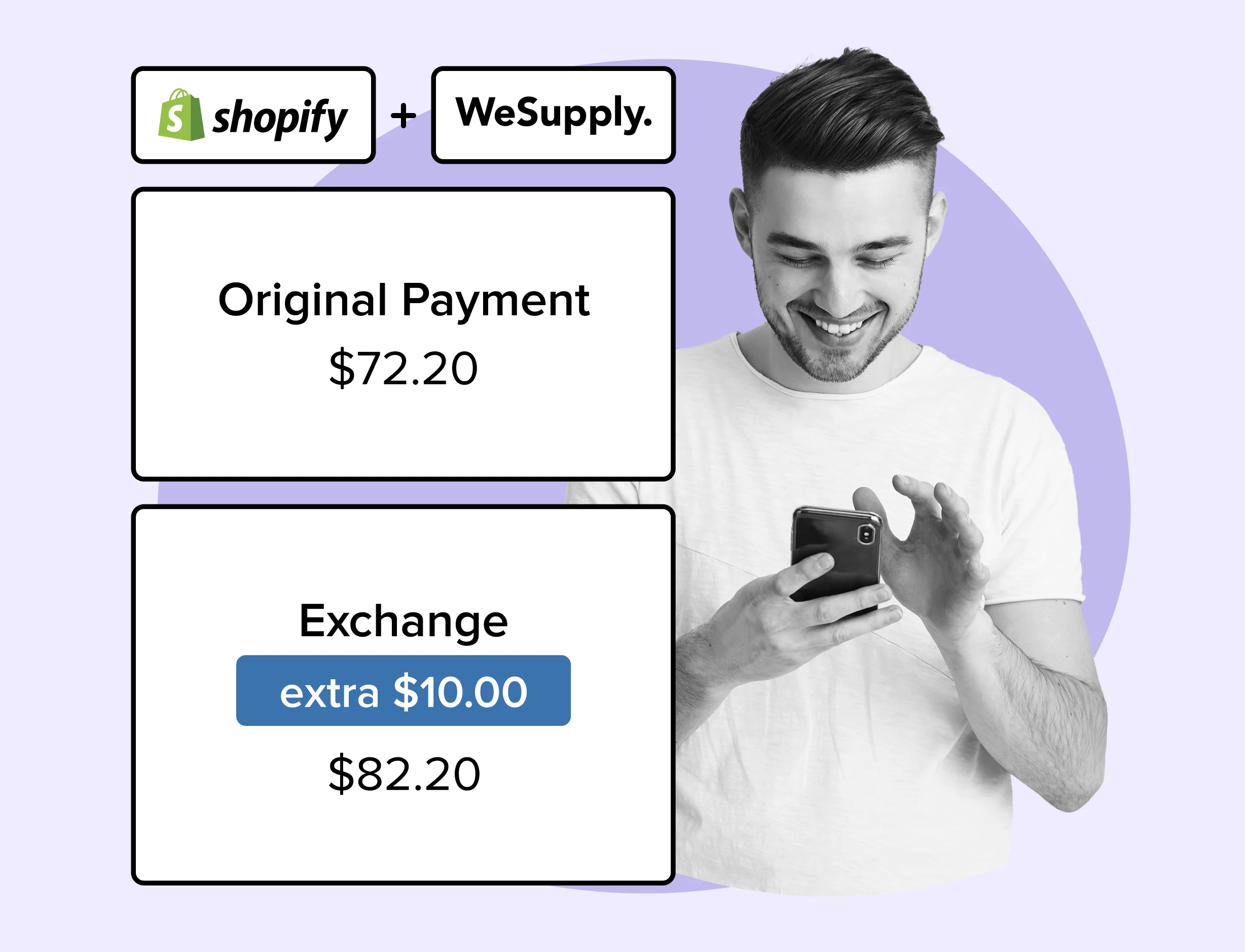
Wondering how discounts on Shopify CLV impact Customer Lifetime Value (CLV)? This article explores the strategic use of discounts to improve Shopify CLV, the balance between enticing offers and brand value, and how to apply discounts on Shopify CLV without lowering long-term profit margins.
Strategic discounting on Shopify can enhance customer satisfaction and encourage repeat purchases, which increases the Customer Lifetime Value (CLV) and fosters customer retention but must be balanced to avoid devaluing the brand.
Discounts have several psychological effects on consumers, such as the scarcity principle, which can make offers more attractive, and the anchoring effect, which can enhance the perceived value of discounted items.
To maintain a positive impact on CLV, businesses should monitor key performance indicators, personalize discount offers, avoid excessive discounting, and adapt strategies based on performance data and customer preferences.
WeSupply helps with Shopify customer lifetime value by optimizing discount strategies and enhancing post-purchase experiences. Its delivery date estimates and flexible exchange options increase sales and customer loyalty. Additionally, WeSupply’s analytics tools help businesses fine-tune their services, further driving long-term trust and value on the Shopify platform. Get Started with WeSupply: Elevate Your Shopify Store Today!
Customer Lifetime Value (CLV) represents the total profit a business expects to earn from a customer throughout their business relationship. For Shopify stores, this valuable metric promotes resource allocation towards user acquisition and retention, paving the way for sustainable business growth.
One way to enhance CLV is through strategic discounting. Shopify stores can offer a variety of discounts, such as:
Welcome discounts
Bundle discounts
Limited-time flash discounts
Review incentives
Referral discounts for loyal customers
These methods can significantly increase customer satisfaction and loyalty, encouraging repeat purchases, ultimately increasing customer lifetime value, and contributing to customer retention.
While discounts can be advantageous in attracting new customers, incentivizing repeat purchases, and increasing customer satisfaction, they also come with potential negative consequences. Offering discounts can have a positive impact on product demand and sales volume by increasing sales and helping move excess inventory. However, the overuse of discounts can lead to the possible devaluation of products or services, which can affect the ability to accurately calculate CLV.
Grasping the advantages and disadvantages of discounting is vital for all businesses. It allows them to achieve a balance and formulate effective discount strategies without compromising the value of their offerings or damaging the brand, which can ultimately impact the average customer lifespan.
Businesses can find a potent tool in strategic discounting. Some benefits of using discounts include:
Enticing individuals who have not previously made a purchase
Providing an opportunity for businesses to establish enduring connections
Enhancing the customer journey
Fostering long-term relationships
Discounts can also contribute to fostering loyalty through a variety of strategies. These include:
Providing referral benefits
Rewarding milestone achievements
Offering exclusive deals to loyalty program members
Making customers feel appreciated with early access privileges.
Discount codes can be effectively integrated into loyalty programs by being assigned based on purchase history and by allowing customers to unlock higher discounts as they reach program tiers. This structured benefit system encourages ongoing engagement and purchasing.
Time-sensitive discount strategies, such as flash sales, create a sense of urgency, prompting customers to make swift purchases. This can help increase customer lifetime value.
Despite the numerous advantages of discounts, their potential drawbacks warrant careful consideration. One of the main disadvantages is their direct impact on profit margins. Offering discounts to customers who would have made purchases without them can lead to a reduction in profits and potentially affect the increase in CLV.
Excessive use of discounts can also diminish the value of a brand. It’s important to use discounts to strengthen positive and profitable customer behaviors, such as exceptional customer service, rather than to undermine the brand’s worth.
Moreover, continuous discounts can condition shoppers to anticipate them, particularly concerning new customers as it establishes an expectation for future discounts.
WeSupply, a post-purchase optimization platform, offers a robust solution to counteract the disadvantages of discounting by enhancing ROI. By focusing on the post-purchase journey, WeSupply minimizes the hidden costs often overlooked in traditional discount strategies. This approach not only ensures a significant return on investment but also allows businesses to allocate financial resources more effectively. Discover your potential savings and boost your ROI by exploring our ROI Calculator here. This tool provides a clear view of the financial benefits you can achieve by optimizing your post-purchase experience.
The positive impact of discounts on CLV can be maximized by devising targeted discount campaigns. Time-sensitive discounts, such as automated email reminders for abandoned carts with expiring discounts, and limited-time Buy One Get One (BOGO) offers, can create a sense of urgency, encouraging customers to promptly avail of the offers.
Implementing targeted discounts on specific products or categories can generate interest, boost sales for those particular items, and facilitate efficient clearance of excess inventory.
Additionally, providing exclusive discounts to email subscribers can strengthen customer engagement and foster a sense of exclusivity. The integration of personalized recommendations can result in a more customized shopping experience, stimulating purchasing behavior and encouraging repeat purchases.
WeSupply’s Estimated Delivery Date feature boosts targeted discount campaigns by reducing cart abandonment and increasing conversions. By meeting customer expectations for visible delivery dates at checkout and on product pages, it alleviates shipping anxiety and builds trust. Additionally, order cut-off times add a sense of urgency, enhancing the effectiveness of sales strategies and positively impacting purchasing decisions.
Personalized discounting entails the creation of discount codes tailored to individual customers’ preferences and purchasing behavior. Businesses can implement this strategy by providing discounts based on factors such as individual preferences, purchase history, or specific product interests.
Personalized discounts can foster trust and enhance customer relationships, contributing to customer loyalty. This, in turn, increases the likelihood of existing customers making recurring purchases.
By offering complementary items tailored to customer preferences, businesses can enrich the shopping experience. This not only boosts the lifetime value of purchases but also elevates customer satisfaction and fosters repeat business.
Continuing this practice post-purchase is crucial. WeSupply’s fully branded Exchange feature enhances discount personalization by offering flexible exchanges over refunds, also allowing retailers to cement their brand identity into the process and increase customer loyalty as well. This feature also incentivizes customers to choose store credit or gift cards, potentially increasing order value and customer lifetime value. It turns returns into new sales opportunities by drawing customers back to the product catalog and encouraging further purchases. This strategy not only boosts sales but also fosters a trusting relationship with customers.
Incentivize exchanges over returns
Book a quick call with our experts to see how WeSupply can help you save sales through exchanges and boost the average order value using instant store credit.
By strategically aligning them with seasons, holidays, or events to tap into consumer trends, seasonal and event-based discounts can effectively bolster customer lifetime value. Global events and holidays establish behavioral norms and expectations for special offers. These occasions often evoke emotions that make consumers more receptive to seasonal shopping experiences and deals, influencing the timing and nature of their purchases. Some examples of seasonal and event-based discounts include:
Back-to-school sales
Black Friday and Cyber Monday deals
Valentine’s Day promotions
Christmas and holiday sales
Summer clearance sales
By offering discounts and promotions during these specific times, businesses can attract more customers and increase sales.
Effective seasonal discount campaigns can range from President’s Day to Christmas promotions. Businesses present pertinent offers throughout various holidays, and their effectiveness can be notably influenced by the utilization of seasonal ad copy to showcase these exclusive deals.
A comprehension of the psychological factors impacting consumer behavior can aid businesses in devising more potent discount strategies. Motivators that attract shoppers to promotions, the concept of scarcity, and the emphasis on price rather than the product are all psychological determinants that impact consumers’ decision to respond to discounts.
The scarcity principle enhances the perceived value and desirability of the discounted offer. When a product or offer is perceived as scarce or hard to obtain, customers are more likely to view it as valuable and be incentivized to take advantage of the discount.
A percentage discount is perceived as more attractive to consumers, particularly for items priced under $100, as it gives the impression of a greater discount when compared to a dollar-off discount.
The anchoring effect in discounted pricing operates by setting a higher initial price for a product and subsequently highlighting its current discounted price. This approach capitalizes on buyers’ inclination to use the original price as a point of reference when assessing the value of the discounted price.
For businesses, gauging the impact of discount strategies is of critical importance. Key performance indicators to consider for discount campaigns include metrics such as:
Cost equalization
Return on investment
Participation rate
Number of participants
New fans gained
Cost per acquisition (CPA)
To evaluate the efficacy of a discount strategy, businesses can use metrics like cost equalization, return on investment, and participation rate.
A commonly used Key Performance Indicator (KPI) for assessing the impact of discounts on customer lifetime value is the ratio of customer lifetime value to customer acquisition cost (CLTV:CAC). By monitoring this ratio, it is possible to calculate customer lifetime and evaluate the effect of discounts on customer lifetime value. In this process, calculating customer lifetime becomes a crucial step for businesses to optimize their marketing strategies.
WeSupply underscores the vital role of analytics and data-driven decisions in business, particularly for assessing discount strategy impacts. Offering tools to track key metrics like Customer Satisfaction (CSAT) and Net Promoter Score (NPS), WeSupply enables businesses to identify areas of success and improvement. In retail, understanding and adapting to customer needs is key to overcoming challenges and driving success. Book a Demo Now: Discover How WeSupply Can Revolutionize Your Business!
Despite the array of benefits discounts provide, it’s essential to stay aware of possible pitfalls. E-commerce platforms can prevent the negative impact of excessive discounting by implementing controlled discount strategies such as using one-time use discount codes, link-based discounts, and minimizing the visibility of the coupon field during checkout.
Personalization holds great importance in discount strategies as it guarantees the relevance of offers to individual customer preferences and behaviors, improving customer satisfaction and brand differentiation. Neglecting personalization can lead to customer frustration and negative online sharing, consequently damaging the reputation and competitiveness of the e-commerce business.
To ensure that discounting practices have a positive impact on customer lifetime value, businesses should contemplate strategic methods such as:
The Rule of 100
Preserving perceived value
Leveraging scarcity
Analyzing historical data
Clustering customers for more targeted discounts.
For businesses, it’s vital to continuously monitor and adjust discount strategies based on performance data. Primary indicators to consider when monitoring discount strategies include:
Total sales
Conversion rate
Average order value
Customer acquisition cost
Customer lifetime value
Overall promotions performance
Profitability
Businesses can modify their discount strategies based on performance data by:
Making changes to discounting and promotions
Optimizing non-price factors
Enhancing their conversion discount strategy through the analysis of data, experimentation, personalization, and industry best practices.
Discounts can generate satisfaction and foster consumer confidence, leading to heightened sales. Authentic discounts contribute to building trust, as opposed to artificially inflated prices.
Furthermore, the analysis of consumer behavior and preferences enables the implementation of more targeted discounts tailored to individual preferences, thereby enhancing the efficacy of discount strategies.
At WeSupply, we emphasize the crucial role of analytics and data in improving post-purchase customer experiences. Understanding that progress hinges on tracking performance, we offer tools for monitoring key metrics like CSAT and NPS. This approach allows businesses to adapt swiftly and effectively to customer needs, ensuring consistently delightful experiences.
Going forward, expect discounts to remain a significant element in e-commerce. Customers are more inclined to make repeat purchases and exhibit brand loyalty when discounts are offered.
Personalization techniques in e-commerce discounting are expected to become increasingly sophisticated, driven by data and algorithms. Emerging technologies such as:
AI
Machine learning
Chatbots
Recommendation systems
Web scraping
are playing a significant role in shaping the future of personalization in discounting.
The future of discounting in e-commerce aims to enhance customer lifetime value (CLV) by implementing personalized shopping experiences, providing bundled deals, and utilizing upselling and cross-selling methods as part of the discounting strategies.
In wrapping up, it’s imperative for businesses to strike a balance between the immediate benefits of discounts and their long-term effect on customer lifetime value. Businesses can:
Prioritize projects based on potential impact
Establish clear discounting guidelines
Gradually decrease discounts to stimulate additional purchases
Strategically utilize discounts for customer acquisition and repeat business
Perceive promotions as instruments for growth and loyalty rather than short-term remedies.
However, discounts have the potential to:
create an expectation for lower prices among customers
lead to them becoming price-sensitive
result in reduced revenue
lower average order values over an extended period of time.
To sum up, discounts are a powerful tool that can attract new customers, encourage repeat purchases, and boost customer loyalty. However, they must be used strategically to avoid potential pitfalls such as reduced profit margins and brand devaluation. By understanding the psychology behind discounts, crafting targeted campaigns, and regularly monitoring and adapting discount strategies based on data, businesses can maximize the positive impact of discounts on customer lifetime value.
WeSupply significantly influences Shopify customer lifetime value by enhancing discount strategies and post-purchase experiences. Its Estimated Delivery Date feature reduces cart abandonment and increases conversions by meeting customer expectations for delivery transparency. The Exchange feature further personalizes discounts, encouraging exchanges over refunds and increasing order value through store credit or gift cards. Additionally, WeSupply’s emphasis on data-driven decisions, with tools to track key metrics like CSAT and NPS, enables businesses to optimize their services and adapt to customer needs. These combined features not only boost immediate sales but also foster long-term customer loyalty and trust, crucial for maximizing customer lifetime value on Shopify platforms.
Fully branded post-purchase experience
Instead of sending customer’s generic shipping emails and carrier tracking pages, book a quick call with our experts to see how WeSupply can help you take control of your customer’s experience after they buy from you.
You can use a discount rate of 10% for CLV, as it aligns with the return that firms typically make on their other investments. This rate falls within the range of 8% to 15% commonly used in discounted cash flow analysis.
To calculate CLV on Shopify, simply multiply your Average Order Value (AOV) by the Average Purchase Frequency (APF), and then multiply the result by the Average Customer Lifespan (ACL).
WeSupply boosts customer lifetime value by optimizing discount strategies and improving post-purchase experiences. Features like Estimated Delivery Dates and flexible exchange options increase sales and build long-term customer loyalty.
The Estimated Delivery Date feature reduces cart abandonment and increases conversions by providing customers with transparent and expected delivery times, enhancing the overall shopping experience.
WeSupply’s Exchange feature encourages customers to opt for exchanges over refunds, using store credit or gift cards. This approach not only retains sales but also potentially increases order value and customer engagement.
Yes, WeSupply does have a dedicated app available for Shopify users. Here’s the link to the WeSupply Shopify App.

Learn How To Create Successful Post Purchase Email Campaigns
Build an effective post-purchase email flow that helps you increase customer satisfaction and drive revenue growth!
Consumers seek the best deals on:

Practical upselling strategies: encourage repeat business & build stronger customer relationships, directly contributing to enhanced customer lifetime value.
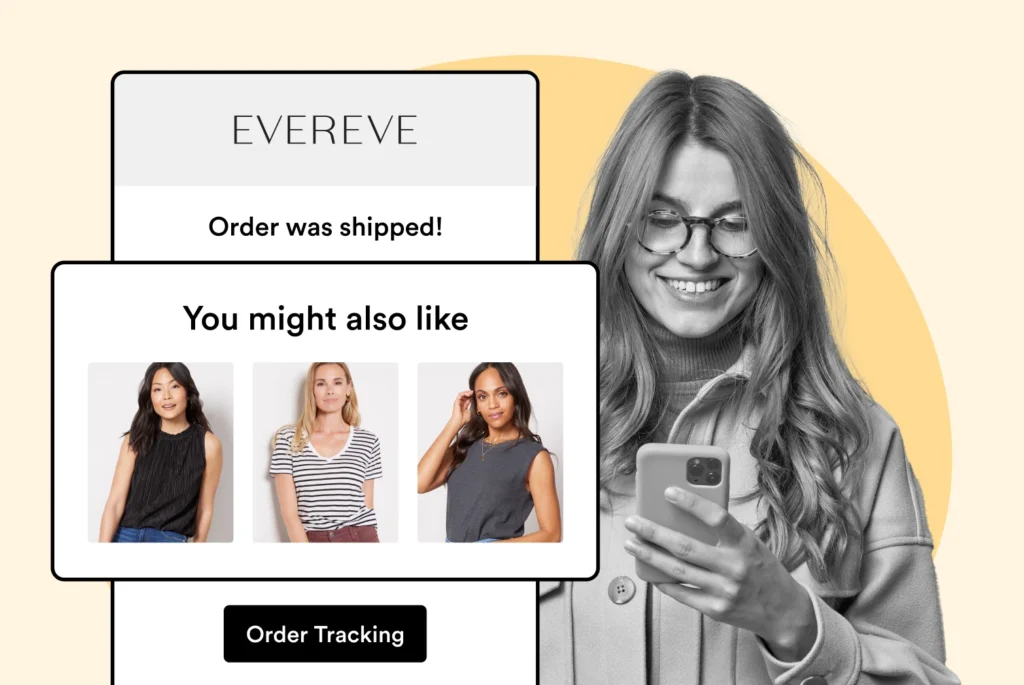
Let’s explore practical strategies to increase your CLV: how to calculate, analyze, and amplify this pivotal metric.
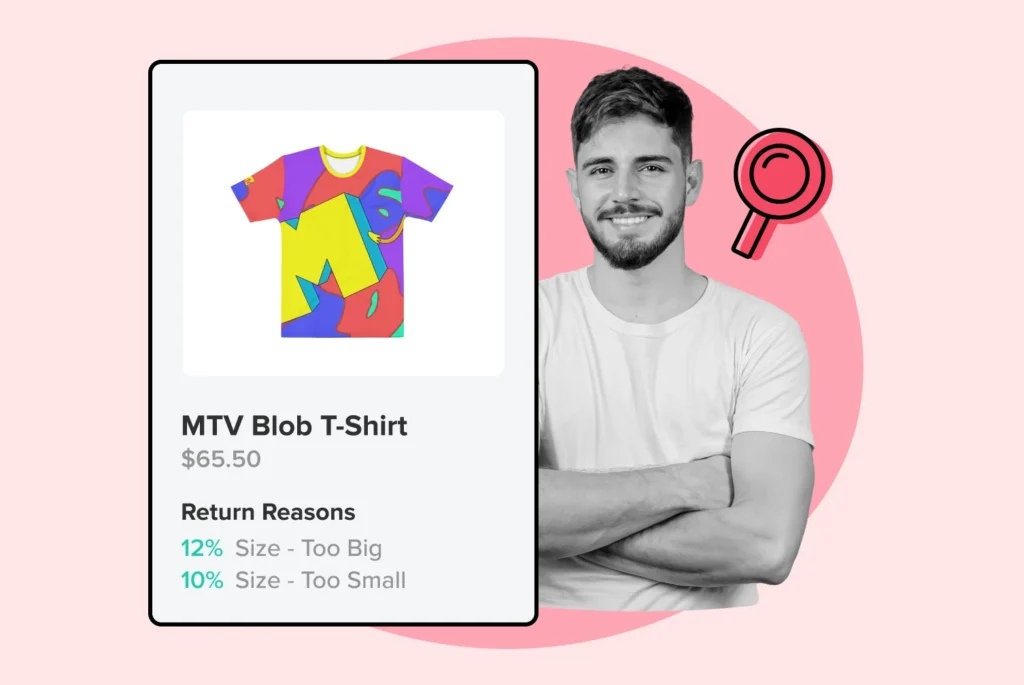
Customer lifetime value (CLTV): Let’s navigate through its calculation & its profound implications for your marketing strategy & bottom line.
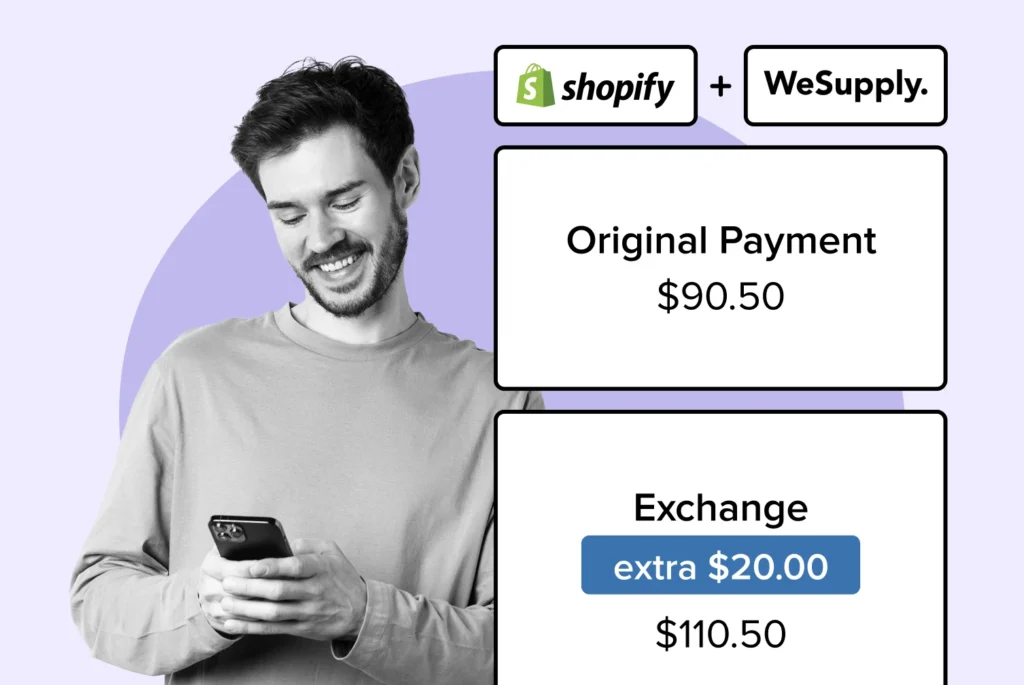
This article dives into the how-to of managing exchanges within your Shopify store, offering practical tactics and key insights.
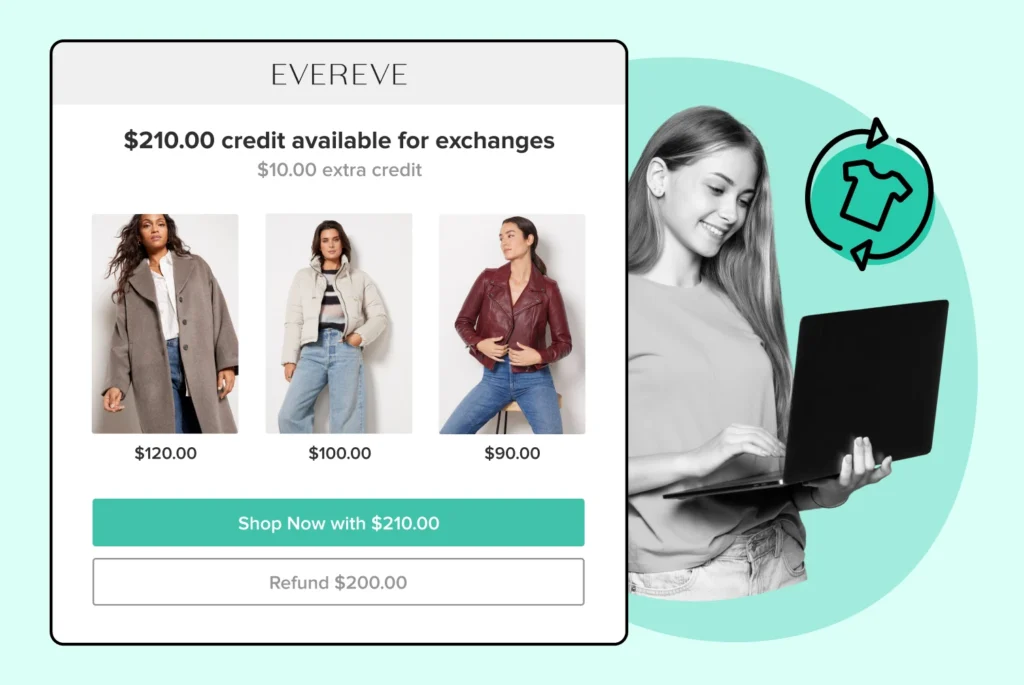
Learn how upgraded exchange processes can reduce costs, conserve resources, and transform customer returns into new purchasing opportunities.
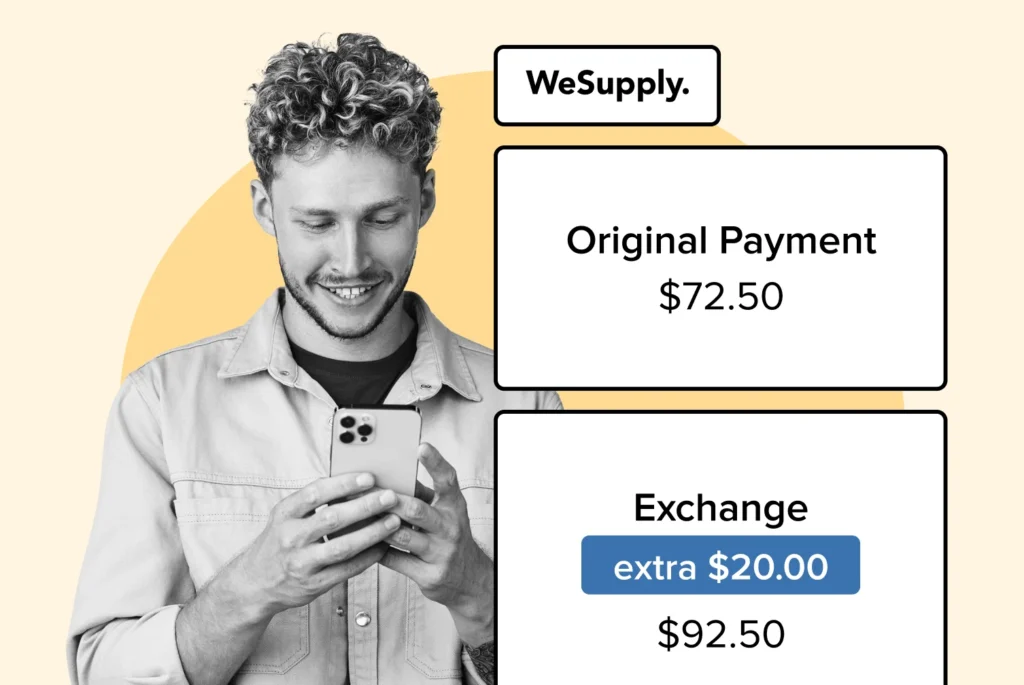
This article lays out proven strategies to optimize your e-commerce exchange policy, reduce return rates, and enhance customer satisfaction.
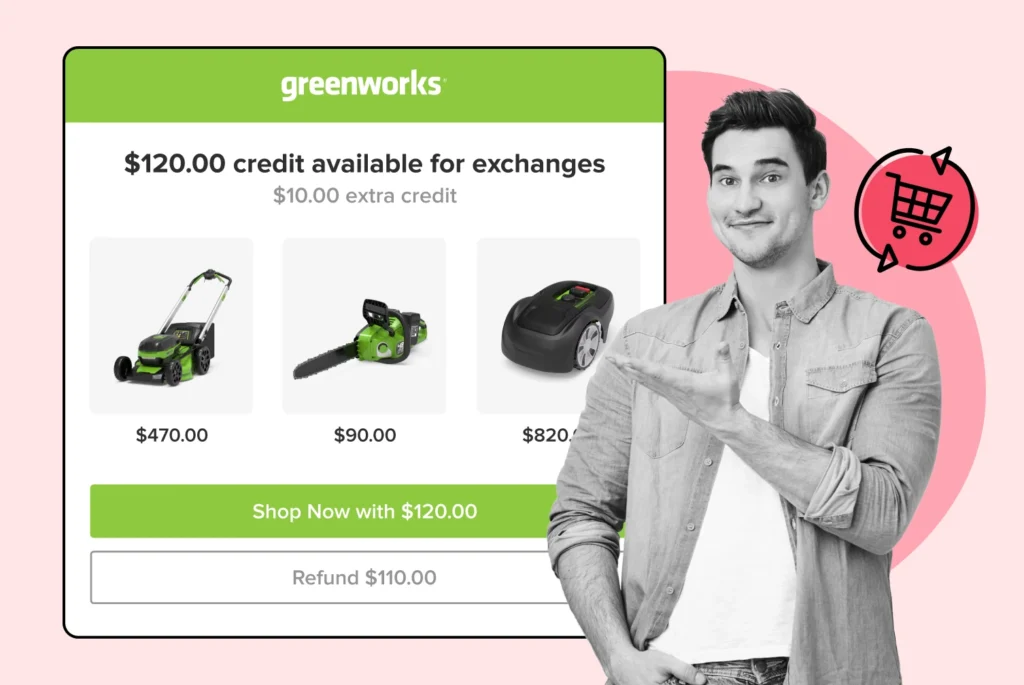
Let’s explore the mechanics, benefits, and integration strategies of instant exchange systems that can take your business to the next level.
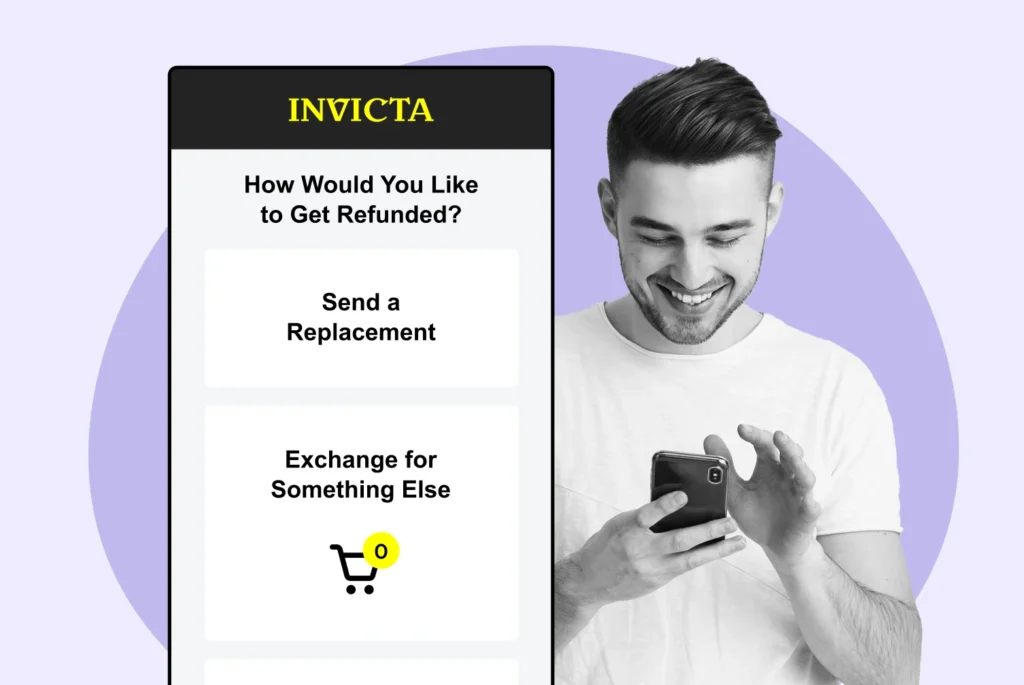
Offer tailored shopping experiences to unlock the power of personalization and propel your e-commerce business to new heights.
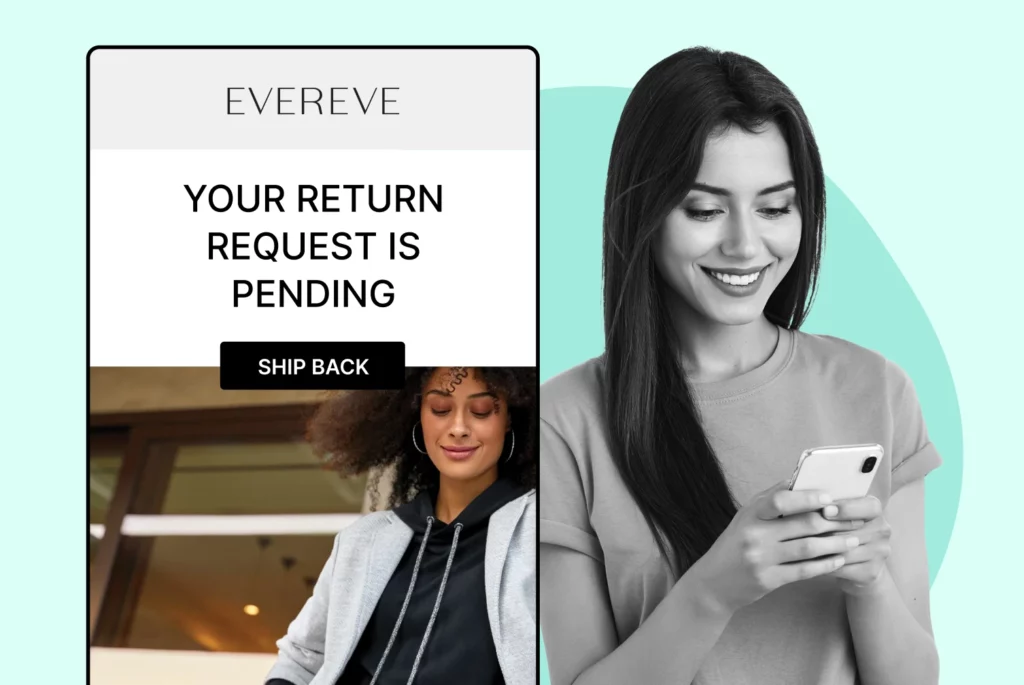
Let’s explore e-commerce returns: factors influencing customer satisfaction, return process streamlining strategies, and future trends.